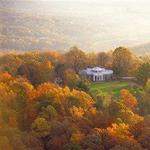Vignesh & Portia


Things To Do
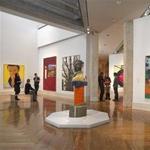
Virginia Museum of Fine Arts
Most visitors are impressed with the Virginia Museum of Fine Arts, comparing its collections to what you would find in the art museums of much larger cities. This Museum District standout is best known for its five gorgeous Fabergé eggs, but it also features works by Degas, Cézanne and Renoir, and large collections of African, Indian and Tibetan art. Recent visitors were especially impressed with the McGlothlin Collection of American Art. Reviewers said it's impossible to see everything in just one visit and recommend setting aside at least several hours to peruse. If you can, try visiting more than once during your Richmond trip. Aside from the amazing collections, travelers were also impressed with Amuse Restaurant, located on-site (often considered one of Richmond's best restaurants).
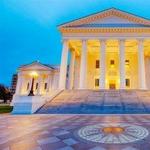
Virginia State Capitol
This Capitol building's big claim to fame is that it was partially designed by Thomas Jefferson. He supposedly based the structure on the Maison Carrée temple (located in Nîmes, France), which he greatly admired. And in addition to learning about the building's design trivia, visitors also like to stroll the grounds and snap photos. The surrounding area, known as Capitol Square, has several monuments dedicated to the civil rights movement, as well as to prominent Virginians like Thomas Jefferson, Patrick Henry and Edgar Allan Poe. Recent visitors said they were pleasantly surprised by how interesting a visit to the Capitol building proved to be. Along with the unique architecture, reviewers also praised the knowledgeable guides and encouraged future visitors to join in on a free guided tour.
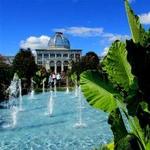
Lewis Ginter Botanical Garden
Purchased by a prominent Richmond businessman in 1895, Lewis Ginter Botanical Garden sits on property that was Powhatan Indian hunting ground. Now, the 50-acre garden attracts droves of Richmond visitors who come to marvel at its many blooms and domed conservatory – the only one of its kind in the mid-Atlantic. There are also several beloved family events throughout the year like Butterflies LIVE!, the Goblins and Gourds Halloween event and the GardenFest of Lights held in late November and early January. Recent visitors called the garden a gem in Richmond and said it's beautiful year-round. When you're not enjoying the greenery, you can enjoy light snacks and tea in the on-site cafe and tea house. There's also a garden shop on-site in case you're inspired to plant some flowers of your own.
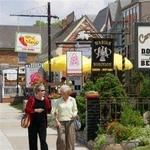
Carytown
Locals and frequent visitors agree that the city's hippest shops and restaurants converge in a Museum District-adjacent area known as Carytown. But take note: Boutiques reign here, so don't visit expecting a Toys "R" Us, Best Buy or Crate and Barrel; instead you'll find quirky alternatives like the World of Mirth, Plan 9 Music and Need Supply Co. There are also some familiar sights: Carytown hosts a Hair Cuttery, a 7-Eleven and a Starbucks. If you like to shop, you owe yourself a visit to at least gaze at the window displays. And if you're budget conscious, keep in mind that Carytown eateries are known to be overpriced. To save some money, just visit for ambiance: Mark the popular (and free) August Watermelon Festival on your calendar or go see a movie or live performance at the Byrd Theatre. The Byrd is a preserved Richmond movie house that's very popular with locals (particularly for its $2 ticket prices).

Kings Dominion
When you and your kids need a break from all the history lessons Richmond has to offer, head about 25 miles north of the city to Kings Dominion. This 400-acre water and theme park wins praise from recent visitors for its manageable size and family-friendly attractions. Thrill-seekers particularly liked all the roller coasters here, especially the wooden Grizzly coaster, which takes riders through a dense forest. And another bonus: Entrance to the kid-friendly Soak City water park is included in your general admission fee. The only complaint offered by recent visitors pertained to the high price of food. Though you can't bring outside food or drink into the park, there are several shaded picnic areas in the guest parking lot if you want to pack food or drinks to consume before entering the park. If you do plan to buy soft drinks or water inside the park, consider purchasing the souvenir bottle. Though the price may seem steep ($10.99), it'll get you free refills all day.
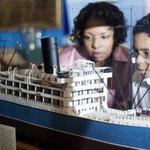
Virginia Museum of History & Culture
Located in Richmond's Museum District, the Virginia Historical Society boasts an exhaustive collection of the commonwealth's Civil War memorabilia, including books, newspapers, photographs, business and genealogical records – even sheet music. In other words, for museumgoers curious about Civil War history – you just might have hit the jackpot. Recent visitors raved about this free museum, which they described as a fun and educational rainy day activity. Though you have to pay to access special exhibits, reviewers were happy to fork over the extra cash to peruse.
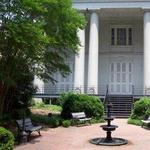
American Civil War Museum- Historic Tredegar
The American Civil War Museum actually comprises three sites: The Museum and White House of the Confederacy and Historic Tredegar can both be found in Richmond, while the Museum of the Confederacy-Appomattox sits in Appomattox, Virginia. Thanks to its comprehensive collection of Confederate artifacts, weapons and art, this museum is a required stop for Civil War buffs. T The museum's location, on East Clay Street, is also significant – the mansion next door was once Davis' home. You can visit both the museum and the Confederate president's abode, which is also known as the Confederate White House. Guided tours through the house leave from the museum lobby regularly throughout the day.
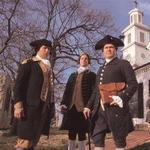
St. John's Church
Most tourists don't visit St. John's for liturgical reasons, but rather historical ones. This was the Richmond church where in 1775 Patrick Henry famously pleaded to "Give me liberty, or give me death!" And in the graveyard you'll find the final resting place of Elizabeth Arnold Poe (mother of Edgar Allan) and George Wythe, a signer of the Declaration of Independence.
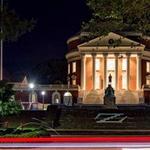
University of Virginia
A little trivia for you: Did you know the University of Virginia is the only university in the United States to be designated a World Heritage Site by UNESCO? And it's not hard to see why — it's a bastion of U.S. education, and it holds an unofficial reputation for containing the country's most magnificent campus grounds. It's also historically significant, as it was founded by Thomas Jefferson in 1819 as the first nonsectarian (or nonreligious) university in the country. Recent visitors gushed about the gorgeous grounds and highly recommended taking a tour. Historical tours begin in the Small Special Collections Library and are offered daily (except on football game days at the university); hourlong tours start at 10 a.m., 11 a.m. and 2 p.m. The university also offers "specialty tours," which expand on singular aspects of the university's past, such as the history of African Americans. These tours are offered at 4 p.m. every Friday. You can also request different specialty tours.
Colonial Williamsburg Historic Area
t is an amazing feeling walking through the site where some of the first British colonists to the New World walked and lived. Located on Jamestown Island, Jamestowne was the original capital of Virginia Colony and the first English permanent settlement in North America. The life of the early colonists was not easy – they suffered diseases, hunger, and bloody conflict with local Powhatan Indians. The city burned to the ground in 1676, and all that remains is a brick church tower that stands today as a reminder of human resilience.
